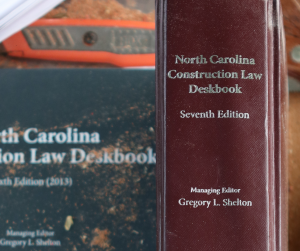Employees, Independent Contractors, and the Mythical “1099 Employee”
By: Gregory L. Shelton
Shelton Law Carolinas
(704) 940-9012
I too have heard the whispers of strange creatures called “1099 Employees” that roam abroad. But before you run off to Oregon with night vision goggles and a duck call, understand that the term “1099” refers to Form 1099-MISC, an IRS form used to report “nonemployee compensation” and other miscellaneous income. Employee wages and withholding, on the other hand, are reported on the W-2 form.
We could debate the metaphysical aspects of “1099 employees,” but let’s just skip ahead to the part where I tell you that “1099 employees” do not exist. The term is an oxymoron, like “deafening silence” or “forward retreat.”
What fun is a world without some mystery and danger, you ask? Fret not. The law offers plenty of mystery and danger when it comes to deciding whether to treat a worker as an employee or an independent contractor.
I. The Employee/Independent Contractor Distinction
Classifying a worker as an independent contractor eliminates significant costs and administrative burdens for construction companies. Companies don’t pay or administer an independent contractor’s social security taxes, overtime, health insurance benefits, workers compensation insurance, unemployment insurance, and other costs. The company also avoids potential liability under employment discrimination laws. In general terms, independent contractors can thus be viewed as subcontractors.
Simply declaring a worker an independent contractor, however, will not make it so. The law imposes a duty on the company to properly classify the worker’s status; in the same way the law imposes a duty on the taxpayer to properly report income.
The construction industry is particularly susceptible to misclassifying employees as independent contractors. The industry is nomadic and seasonal in nature, involves greater potential for on-the-job injuries, and relies heavily upon subcontractors and journeymen laborers to perform the work. To add to the temptation, the time and administrative overhead necessary to comply with employment laws, tax laws, and regulations can be overwhelming to smaller companies. This is particularly true in the stop-and-go MGB economy of recent years.
II. Our Employees Independent Contractors Are Our Greatest Asset!
I’ve observed three general categories of construction companies that misclassify workers:
- Companies that innocently, or perhaps naïvely, believe that worker classification is a matter of private contract between the company and the worker.
- Companies whose workers straddle the line between employee and independent contractor (“close calls”).
- Companies that understand the law but decide that the financial benefit of treating an employee as an independent contractor outweighs the risk of getting caught.
What constitutes an “employee” is often in the eye of the beholder (meaning in this case a judge or jury). Courts and government agencies have developed legal tests as guidance. The IRS takes into account twenty factors to decide status, whereas the DOL applies the “economic realities” test derived from a decision by the United States Supreme Court. State courts use their own “common law” tests developed through court precedent. For example, South Carolina courts follow the Yellow Cab test, named after a state court case involving a cab driver’s relationship to the cab company.
Although other factors are considered, the issue of control over the worker plays a critical role in the tests. For instance, under South Carolina’s Yellow Cab decision, “[t]he test for determining whether a relationship between parties is that of employer and employee, or that of employer and independent contractor, is whether the party for whom the work is being done has the right to control the worker with respect to the manner or method of doing work, as distinguished from the right merely to require certain definite results conforming to the contract.” Other factors considered by courts and agencies include training, integration, work hours, duration of relationship, payment of travel expenses, furnishing of tools, and availability of the worker’s services to the public.
Courts examine classifications on a case-by-case basis, focusing on the specific facts and circumstances at issue in the case. For close calls, companies should seek guidance from legal counsel before classifying a worker as an independent contractor.
III. The Enforcers
The government agencies with power to punish a “misclassifer” (my term) include the Internal Revenue Service, Department of Revenue, Department of Labor, Occupational Safety and Health Administration, Equal Employment Opportunity Commission, and Immigration and Customs Enforcement. CGL carriers may also take an interest in worker classification.
A company charged with or sued for misclassifying a worker can face financial penalties including unpaid withholdings, unpaid employment insurance taxes, unpaid overtime, private lawsuits for damages, assessment of attorneys’ fees, and other unpleasant consequences depending upon the issues involved.
IV. To W-2 or Not to W-2 . . .
A company’s choice of tax form is not the last word on the worker’s classification as employee or independent contractor. If an employee is misclassified as an independent contractor, expect government agencies, insurance companies, plaintiffs’ lawyers and employment lawyers to scrutinize a worker’s true relationship to your company. Courts and government agencies have developed several legal tests to decide whether a worker is an employee or independent contractor. A company found to have misclassified an employee as an independent contractor faces financial penalties, damages, and legal expenses.
Attr. Hieronymus Bosch, The Garden of Earthly Delights, 1504
{PD-US}


